Remedy for tinea versicolor. Tinea Versicolor: Diagnosis, Treatment, and Effective Remedies
How is tinea versicolor diagnosed. What are the most effective treatments for tinea versicolor. Can tinea versicolor be prevented. How long does it take to cure tinea versicolor. Are there any natural remedies for tinea versicolor.
Understanding Tinea Versicolor: Causes and Symptoms
Tinea versicolor is a common fungal infection of the skin that causes discolored patches to appear on the body. This condition, also known as pityriasis versicolor, occurs when an overgrowth of yeast on the skin’s surface leads to the development of distinctive skin lesions.
The primary cause of tinea versicolor is an overgrowth of the yeast Malassezia, which is naturally present on human skin. Certain factors can trigger this overgrowth, including:
- Humid, warm climates
- Excessive sweating
- Oily skin
- Hormonal changes
- Weakened immune system
Symptoms of tinea versicolor typically include:
- Discolored patches of skin (lighter or darker than surrounding skin)
- Mild itching or scaling
- Patches that may become more noticeable after sun exposure
Is tinea versicolor contagious? No, tinea versicolor is not contagious. Despite being caused by a fungus, the condition cannot be transmitted from person to person through direct contact or sharing personal items.

Diagnosing Tinea Versicolor: Methods and Procedures
Accurate diagnosis of tinea versicolor is crucial for effective treatment. Dermatologists employ several methods to confirm the presence of this fungal infection:
Visual Examination
The first step in diagnosing tinea versicolor is a thorough visual examination of the affected skin. A dermatologist will look for characteristic signs such as discolored patches with fine scaling.
Wood’s Lamp Examination
This diagnostic tool uses ultraviolet light to examine the skin. Under Wood’s lamp, tinea versicolor often appears as a yellow-green fluorescence, helping to confirm the diagnosis.
Skin Scraping and Microscopic Examination
In some cases, a skin scraping may be taken from the affected area and examined under a microscope. This can reveal the presence of yeast cells and abnormal hyphae, which are characteristic of tinea versicolor.
KOH Preparation
A potassium hydroxide (KOH) preparation involves treating a skin sample with KOH solution and examining it under a microscope. This method can clearly show the presence of fungal elements.

How long does it take to diagnose tinea versicolor? The diagnosis of tinea versicolor can usually be made during a single office visit, with results from skin scrapings or KOH preparations available within minutes.
Effective Treatments for Tinea Versicolor
Once diagnosed, tinea versicolor can be treated with various antifungal medications and topical treatments. The choice of treatment depends on the severity of the infection and individual patient factors.
Topical Antifungal Medications
Over-the-counter and prescription topical antifungals are often the first line of treatment for tinea versicolor. These include:
- Selenium sulfide (found in some dandruff shampoos)
- Ketoconazole
- Clotrimazole
- Miconazole
- Terbinafine
These medications are typically applied directly to the affected areas for a specified period, usually ranging from a few days to several weeks.
Oral Antifungal Medications
For more severe or widespread cases of tinea versicolor, oral antifungal medications may be prescribed. Common options include:

- Fluconazole
- Itraconazole
- Ketoconazole (oral form)
Oral medications are generally more effective for extensive infections or cases that don’t respond well to topical treatments.
Medicated Shampoos and Soaps
Antifungal shampoos and soaps containing ingredients like selenium sulfide or ketoconazole can be used as part of the treatment regimen. These products are often used to prevent recurrence of tinea versicolor.
How long does it take for tinea versicolor treatment to work? While the fungal infection itself may clear up within a few weeks of treatment, the skin discoloration can persist for several months. It’s important for patients to understand that the color changes may take time to resolve even after successful treatment of the underlying infection.
Natural Remedies and Home Treatments for Tinea Versicolor
While medical treatments are the most reliable way to address tinea versicolor, some natural remedies and home treatments may help manage symptoms or complement prescribed therapies:
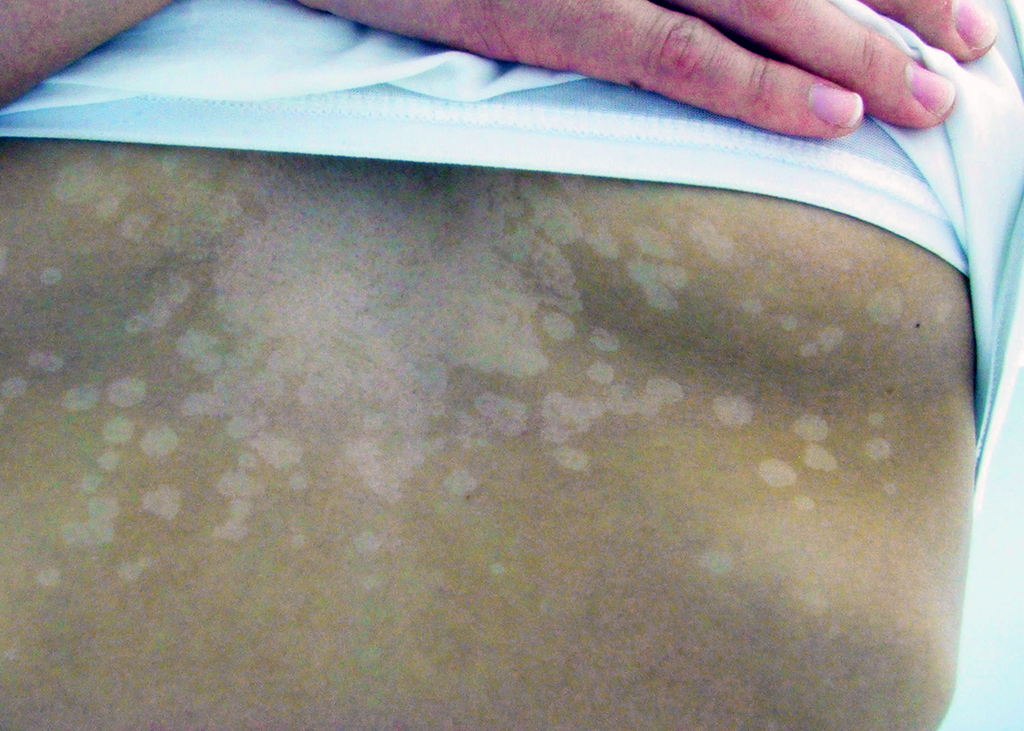
Tea Tree Oil
Known for its antifungal properties, tea tree oil can be diluted and applied to affected areas. However, it’s important to perform a patch test first to ensure no allergic reactions occur.
Apple Cider Vinegar
Some people find that applying diluted apple cider vinegar to the skin helps manage tinea versicolor symptoms. The acidity may help create an environment less favorable for yeast growth.
Coconut Oil
Coconut oil contains caprylic acid, which has antifungal properties. Applying coconut oil to affected areas may help in managing the infection.
Aloe Vera
The soothing properties of aloe vera can help alleviate itching and inflammation associated with tinea versicolor.
Do natural remedies cure tinea versicolor? While natural remedies may provide some relief, they are generally not as effective as prescribed antifungal treatments. It’s important to consult with a dermatologist before relying solely on natural remedies, especially for severe or persistent cases.
Preventing Recurrence of Tinea Versicolor
Tinea versicolor has a tendency to recur, even after successful treatment. Implementing preventive measures can help reduce the likelihood of future outbreaks:

Maintain Good Skin Hygiene
Regular cleansing and exfoliation can help keep the skin’s yeast population in check. Use gentle, non-irritating products to avoid disrupting the skin’s natural balance.
Use Antifungal Products Prophylactically
Using antifungal shampoos or soaps once or twice a month, especially during warm, humid seasons, can help prevent recurrence.
Wear Breathable Fabrics
Opt for loose-fitting, breathable clothing, especially in hot and humid conditions. This can help reduce excessive sweating and create a less favorable environment for yeast overgrowth.
Manage Underlying Conditions
If you have a condition that makes you more susceptible to tinea versicolor, such as a weakened immune system or hormonal imbalances, work with your healthcare provider to manage these underlying issues.
Can tinea versicolor be prevented entirely? While it’s not always possible to prevent tinea versicolor completely, especially for those with a predisposition to the condition, implementing these preventive measures can significantly reduce the frequency and severity of outbreaks.

Living with Tinea Versicolor: Lifestyle Adjustments and Coping Strategies
Dealing with tinea versicolor can be challenging, particularly due to its visible nature and potential for recurrence. Here are some strategies to help manage the condition and its impact on daily life:
Sun Protection
The discolored patches caused by tinea versicolor can become more noticeable with sun exposure. Use broad-spectrum sunscreen and protective clothing to minimize this effect and protect your skin.
Skincare Routine Adaptation
Adjust your skincare routine to accommodate your condition. Use non-comedogenic products and avoid heavy, oil-based moisturizers that may exacerbate yeast overgrowth.
Stress Management
Stress can weaken the immune system, potentially making you more susceptible to fungal overgrowth. Incorporate stress-reduction techniques such as meditation, yoga, or regular exercise into your routine.
Open Communication
If you’re feeling self-conscious about the appearance of your skin, consider talking to friends, family, or a mental health professional. Open communication can help alleviate anxiety and build a support system.

How does tinea versicolor impact quality of life? While tinea versicolor is not a serious health threat, its visible nature can affect self-esteem and social interactions. Understanding the condition and having effective management strategies can significantly improve quality of life for those affected.
Advances in Tinea Versicolor Research and Treatment
The field of dermatology continues to advance, bringing new insights and potential treatments for conditions like tinea versicolor. Here are some areas of ongoing research and development:
Improved Diagnostic Tools
Researchers are working on developing more accurate and efficient diagnostic methods for tinea versicolor. This includes exploring the use of advanced imaging techniques and molecular diagnostics.
Novel Antifungal Agents
The development of new antifungal compounds with improved efficacy and fewer side effects is an active area of research. These may offer more targeted treatment options in the future.
Microbiome Research
Studies into the skin microbiome and its role in conditions like tinea versicolor are providing new insights into the balance of microorganisms on the skin. This research may lead to innovative approaches for prevention and treatment.

Combination Therapies
Investigating the potential of combination therapies, which use multiple antifungal agents or combine antifungal treatments with other approaches, may yield more effective treatment protocols.
What are the most promising new treatments for tinea versicolor? While research is ongoing, some promising areas include the development of long-acting topical antifungals, probiotic-based therapies to restore skin microbiome balance, and novel systemic treatments with improved safety profiles.
When to Seek Professional Help for Tinea Versicolor
While tinea versicolor is generally not a serious condition, there are situations where professional medical advice should be sought:
Persistent or Worsening Symptoms
If over-the-counter treatments haven’t improved your symptoms after a few weeks, or if the condition appears to be worsening, consult a dermatologist.
Widespread Infection
For cases where tinea versicolor covers large areas of the body, professional treatment may be necessary to effectively manage the infection.

Recurrent Episodes
If you experience frequent recurrences of tinea versicolor, a dermatologist can help develop a long-term management plan.
Uncertainty About Diagnosis
If you’re unsure whether your skin changes are due to tinea versicolor or another condition, seek professional evaluation for an accurate diagnosis.
Impact on Quality of Life
If tinea versicolor is significantly affecting your self-esteem or daily activities, a healthcare provider can offer support and more aggressive treatment options.
Should you see a general practitioner or a dermatologist for tinea versicolor? While a general practitioner can often diagnose and treat tinea versicolor, a dermatologist may be preferable for complex cases, recurrent infections, or if you need specialized skincare advice.
In conclusion, tinea versicolor is a manageable fungal skin condition that, while often benign, can have a significant impact on those affected. Understanding its causes, recognizing its symptoms, and knowing the available treatment options are crucial steps in effectively managing this condition. Whether dealing with a first-time occurrence or managing recurrent episodes, a combination of medical treatments, preventive measures, and lifestyle adjustments can help individuals maintain healthy skin and minimize the impact of tinea versicolor on their daily lives. As research continues to advance our understanding of this condition, we can look forward to even more effective and personalized approaches to diagnosis, treatment, and prevention in the future.

Tinea versicolor: Diagnosis and treatment
Diseases & conditions
-
Coronavirus Resource Center
-
Acne
-
Eczema
-
Hair loss
-
Psoriasis
-
Rosacea
-
Skin cancer
-
A to Z diseases
-
A to Z videos
- DIY acne treatment
- How dermatologists treat
- Skin care: Acne-prone skin
- Causes
- Is it really acne?
- Types & treatments
- Childhood eczema
- Adult eczema
- Insider secrets
- Types of hair loss
- Treatment for hair loss
- Causes of hair loss
- Hair care matters
- Insider secrets
- What is psoriasis
- Diagnosis & treatment
- Skin, hair & nail care
- Triggers
- Insider secrets
- What is rosacea
- Treatment
- Skin care & triggers
- Insider secrets
- Types and treatment
- Find skin cancer
- Prevent skin cancer
- Raise awareness
- Español
Featured
Reduce summertime rosacea flare-ups
The sun, heat, and humidity can all trigger rosacea and lead to flare-ups. Find out how you can enjoy summer while reducing flare-ups.
Find out how you can enjoy summer while reducing flare-ups.
JAK inhibitors: A newer type of medication
JAK inhibitors are helping patients with alopecia areata, eczema/atopic dermatitis, psoriasis, and vitiligo. Here’s what you need to know.
Everyday care
-
Skin care basics
-
Skin care secrets
-
Injured skin
-
Itchy skin
-
Sun protection
-
Hair & scalp care
-
Nail care secrets
- Basic skin care
- Dry, oily skin
- Hair removal
- Tattoos and piercings
- Anti-aging skin care
- For your face
- For your skin routine
- Preventing skin problems
- Bites & stings
- Burns, cuts, & other wounds
- Itch relief
- Poison ivy, oak & sumac
- Rashes
- Shade, clothing, and sunscreen
- Sun damage and your skin
- Aprenda a proteger su piel del sol
- Your hair
- Your scalp
- Nail care basics
- Manicures & pedicures
Featured
Practice Safe Sun
Everyone’s at risk for skin cancer. These dermatologists’ tips tell you how to protect your skin.
These dermatologists’ tips tell you how to protect your skin.
Relieve uncontrollably itchy skin
Find out what may be causing the itch and what can bring relief.
Darker Skin Tones
-
Skin care secrets
-
Hair care
-
Hair loss
-
Diseases & Conditions
- Acne
- Dark spots
- Dry skin
- Light spots
- Razor bumps
- Caring for Black hair
- Scalp psoriasis
- Weaves & extensions
- Central centrifugal cicatricial alopecia
- Frontal fibrosing alopecia
- Hairstyles that pull can cause hair loss
- Acanthosis nigricans
- Acne keloidalis nuchae
- Hidradenitis suppurativa
- Keloid scars
- Lupus and your skin
- Sarcoidosis and your skin
- Skin cancer
- Vitiligo
- More diseases & conditions
Featured
Fade dark spots
Find out why dark spots appear and what can fade them.
Untreatable razor bumps or acne?
If you have what feels like razor bumps or acne on the back of your neck or scalp, you may have acne keloidalis nuchae. Find out what can help.
Cosmetic treatments
-
Your safety
-
Age spots & dark marks
-
Cellulite & fat removal
-
Hair removal
-
Scars & stretch marks
-
Wrinkles
-
Younger-looking skin
Featured
Laser hair removal
You can expect permanent results in all but one area. Do you know which one?
Do you know which one?
Scar treatment
If you want to diminish a noticeable scar, know these 10 things before having laser treatment.
Botox
It can smooth out deep wrinkles and lines, but the results aren’t permanent. Here’s how long botox tends to last.
Public health programs
-
Skin cancer awareness
-
Free skin cancer screenings
-
Kids’ camp
-
Good Skin Knowledge
-
Shade Structure grants
-
Skin Cancer, Take a Hike!™
-
Awareness campaigns
-
Flyers & posters
-
Get involved
- Lesson plans and activities
- Community grants
Featured
Free materials to help raise skin cancer awareness
Use these professionally produced online infographics, posters, and videos to help others find and prevent skin cancer.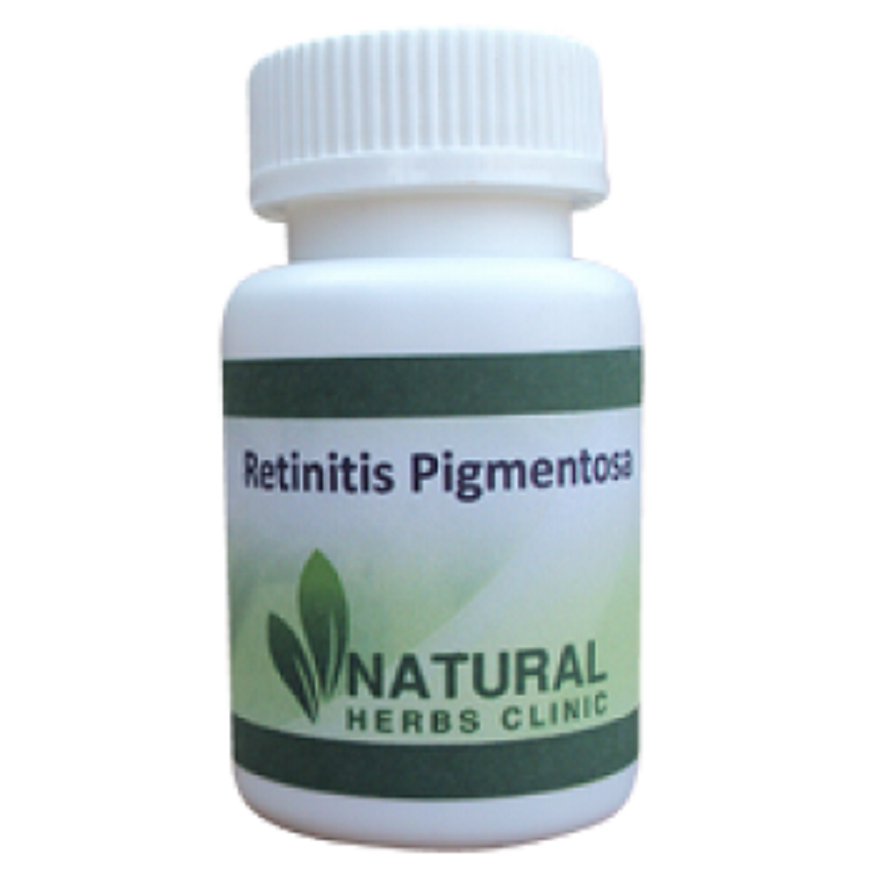
Dermatologist-approved lesson plans, activities you can use
Free to everyone, these materials teach young people about common skin conditions, which can prevent misunderstanding and bullying.
Find a dermatologist
-
Find a dermatologist
-
What is a dermatologist?
-
FAAD: What it means
-
How to select a dermatologist
-
Your digital health
-
Prior authorization
-
Dermatologists team up to improve patient care
- Finding accurate health information
- Health apps
- Wearable medical devices
- Telemedicine
- Protect your information
Featured
Find a Dermatologist
You can search by location, condition, and procedure to find the dermatologist that’s right for you.
What is a dermatologist?
A dermatologist is a medical doctor who specializes in treating the skin, hair, and nails. Dermatologists care for people of all ages.
Tinea Versicolor: Cause, Symptoms, and Treatments
Written by WebMD Editorial Contributors
- What Is Tinea Versicolor?
- Signs and Symptoms of Tinea Versicolor
- Tinea Versicolor Causes
- Tinea Versicolor Diagnosis
- Tinea Versicolor Treatment
- Lifestyle Tips for Managing Tinea Versicolor
- More
Tinea versicolor is a fungal infection that causes small patches of discolored spots on your skin. It’s also called pityriasis versicolor. It results from a type of yeast that naturally lives on your skin. When the yeast grows out of control, the skin disease, which appears as a rash, is the result.
Acidic bleach from the growing yeast causes areas of skin to be a different color than the skin around them. These can be individual spots or patches. Specific signs and symptoms of the infection include:
These can be individual spots or patches. Specific signs and symptoms of the infection include:
Pityriasis versicolor. Pityriasis versicolor is a common skin disease caused by yeast-like fungus (Malassezia furfur). The fungus interferes with the normal pigmentation of the skin causing patches of discoloration, usually on the main trunk of the body and shoulders. It can be treated with antifungal creams, lotions, and soaps.
Patches that are white, pink, red, or brown and may be lighter or darker than the skin around them.
- Spots that don’t tan the way the rest of your skin does.
- Spots that show up more boldly when you do tan.
- Spots that may occur anywhere on your body but are most commonly seen on your neck, chest, back, and arms.
- Spots that are dry and scaly and may itch or hurt, although this is rare.
The spots may disappear during cool weather and get worse during warm and humid weather.
Similar conditions
Some skin problems have symptoms that look like tinea versicolor, including:
- Vitiligo: a disease that makes you lose your skin color
- Pityriasis rosea: a rash that causes small spots that fan out on your body in the shape of a tree
These conditions have features that clue your doctor in to what you have, such as texture and rash pattern.
The yeast that causes tinea versicolor, Malassezia, grows on normal, healthy skin. But these things can trigger an overgrowth that causes the infection:
- Oily skin
- Living in a hot climate
- Sweating a lot
- Hormonal changes
- A weakened immune system
Because the yeast grows naturally on your skin, tinea versicolor isn’t contagious. The condition can affect people of any skin color. It’s more likely to affect teens and young adults. For some people, it can cause emotional distress and feelings of self-consciousness.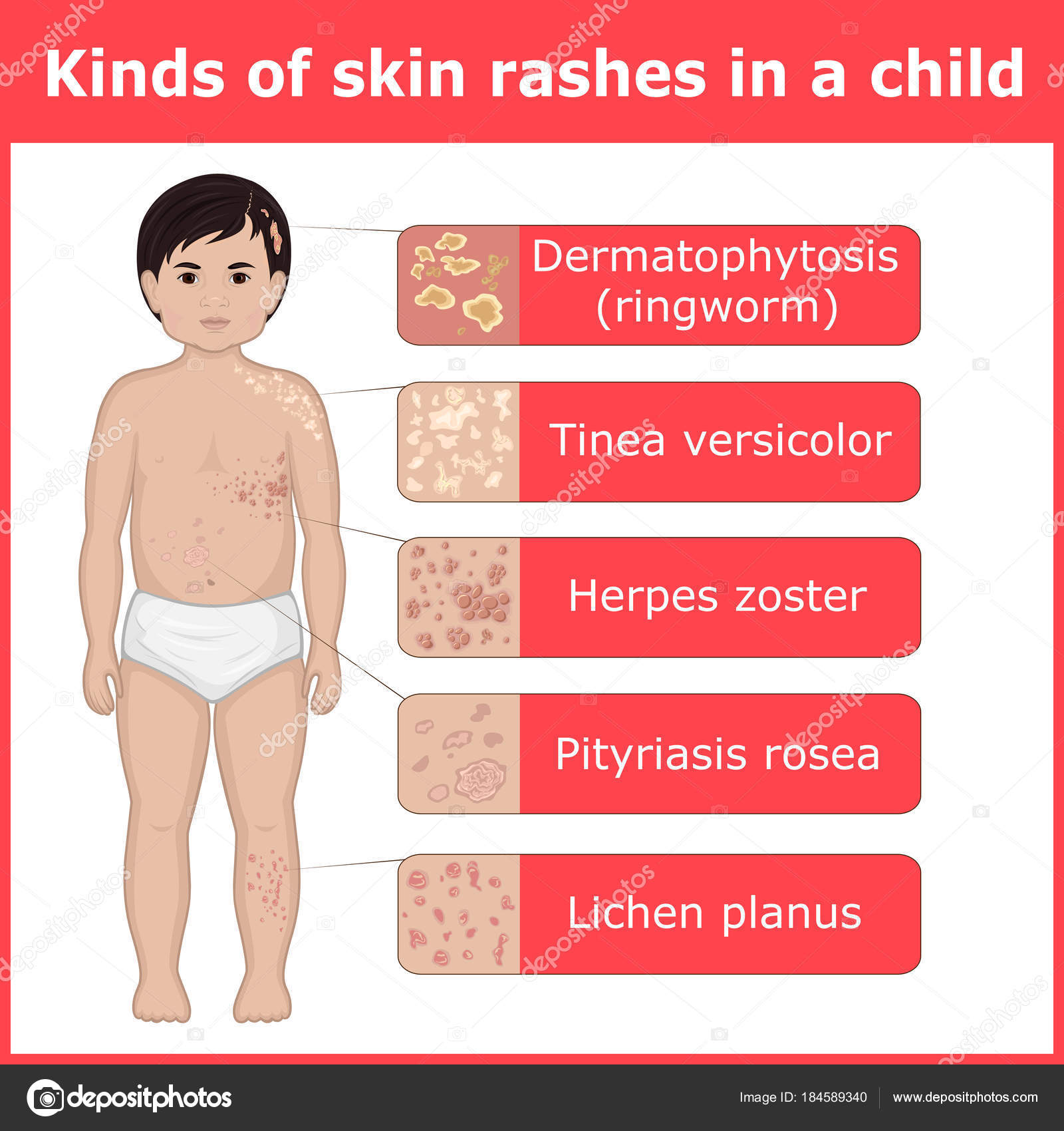
Your doctor can diagnose tinea versicolor by what the rash looks like.
If they need more information, these tests can help:
- Wood lamp (black light) examination. The doctor uses ultraviolet light, which may make the affected areas appear a fluorescent coppery orange color if they’re the result of tinea versicolor.
- Microscopy using potassium hydroxide (KOH). Your doctor removes cells from your skin, soaks them in potassium hydroxide, then looks at them under a microscope.
- Skin biopsy. The doctor takes a skin sample by scraping some skin and scales from the affected area to look at under a microscope. With children, the doctor may lift off skin cells by first firmly attaching clear tape to the affected area then removing it. The sample then can be stuck directly onto a slide to look at with a microscope.
Treatment of tinea versicolor can consist of creams, lotions, or shampoos that you put on your skin. It can also include medication given as pills. The type of treatment will depend on the size, location, and thickness of the infected area.
It can also include medication given as pills. The type of treatment will depend on the size, location, and thickness of the infected area.
Treatment options include:
- Topical antifungals. You put these directly to your skin. They may be in the form of lotion, shampoo, cream, foam, or soap. They keep yeast growth under control. Over-the-counter anti-fungal topical products containing ingredients such as clotrimazole, ketoconazole, miconazole, zinc-pyrithione, selenium sulfide, and terbinafine are available. Prescription products are available too.
- Antifungal pills. These may be used to treat more serious or recurrent cases of tinea versicolor. Sometimes doctors use them because they clear up the infection faster. You’ll need a prescription for these medicines. They can have side effects. Your doctor will keep an eye on you while you’re taking antifungal pills.
Treatment usually gets rid of the fungal infection. But skin discoloration may take several months to resolve.
Episodes are very common because the yeast that causes the infection is a normal fungus that lives on your skin. You might use medicated cleansers once a week for 10 minutes at a time for a few months to help prevent tinea versicolor from coming back. You may need to use these cleansers if the infection keeps returning, especially if you live in a warm and humid area.
To help you manage tinea versicolor you can:
- Avoid using oily skin products.
- Reduce the time you spend in the sun. It may trigger or worsen an episode, and a tan makes the rash more visible.
- Use an anti-fungal shampoo daily for a couple of days prior to sun exposure if you do have to go out.
- Put on sunscreen every day. Use a broad spectrum, nongreasy formula with a minimum sun protection factor (SPF) of 30.
- Try a dandruff shampoo with selenium sulfide.
- Wear loose clothing.
- Choose breathable fabrics, like cotton, to decrease sweating.
Top Picks
Pityriasis versicolor.
 What is pityriasis versicolor?
What is pityriasis versicolor?
IMPORTANT
The information in this section should not be used for self-diagnosis or self-treatment. In case of pain or other exacerbation of the disease, only the attending physician should prescribe diagnostic tests. For diagnosis and proper treatment, you should contact your doctor.
Pityriasis versicolor is a long-term fungal disease affecting the epidermis, which is manifested by the appearance on the skin of pigmented spots of various shades: yellow, pink, brown, brown and characteristic pityriasis peeling. There are no signs of inflammation. Pityriasis versicolor is diagnosed using the Balzer iodine test, fluorescent examination and microscopy of exfoliating scales. Treatment is carried out with antifungal ointments and solutions. Pityriasis versicolor of the common form requires general antimycotic therapy.
- Causes of pityriasis versicolor
- Symptoms of pityriasis versicolor
- Diagnosis of pityriasis versicolor
- Treatment of pityriasis versicolor
- Prophylaxis
- Prices for treatment
General
Pityriasis versicolor is so named because of its typical flaking. The second name – multi-colored lichen – arose due to the various colors of the spots that appear during the disease. The common name “solar fungus” also refers to pityriasis versicolor. It is due to the fact that under the influence of sunlight, the affected areas of the skin become brighter and more noticeable. Most often, pityriasis versicolor affects men and women of young age, most rarely – children under 7 years of age.
The second name – multi-colored lichen – arose due to the various colors of the spots that appear during the disease. The common name “solar fungus” also refers to pityriasis versicolor. It is due to the fact that under the influence of sunlight, the affected areas of the skin become brighter and more noticeable. Most often, pityriasis versicolor affects men and women of young age, most rarely – children under 7 years of age.
Pityriasis versicolor
Causes of pityriasis versicolor
Pityriasis versicolor belongs to the group of keratomycosis – fungal skin diseases that affect only the stratum corneum of the epidermis and the hair cuticle. Its causative agents are the fungi Malassezia furfur, Pityrpsporum orbiculare and Pityrosporum ovale, and these species differ in their ability to pass one into another. Usually, pityriasis versicolor is characterized by low contagiousness, that is, infection occurs only in some cases with close and prolonged contact with the patient. At the same time, the likelihood of getting sick with pityriasis versicolor is largely due to predisposing factors.
At the same time, the likelihood of getting sick with pityriasis versicolor is largely due to predisposing factors.
Factors that form in the body a favorable background for the development of pityriasis versicolor are: weakening of the immune system, increased sweating, endocrine disorders (diabetes mellitus, Itsenko-Cushing’s syndrome, obesity), changes in the chemical composition of sweat, vegetative-vascular dystonia, violation of the barrier skin functions with frequent use of antibacterial gels and soaps, stressful effects on the skin (excessive tanning, solarium, etc.). The authors of some studies conducted in dermatology indicate that in some cases pityriasis versicolor is associated with lymphogranulomatosis and pulmonary tuberculosis.
Symptoms of pityriasis versicolor
Pityriasis versicolor is caused by the multiplication of pathogens in the superficial layers of the skin, which leads to disruption of the functioning of melanocytes – cells that produce the pigment melanin, which gives the skin a particular color. As a result, the affected area of the skin acquires a color that differs from the rest of the skin. The process begins at the mouth of the hair follicle, then the spot gradually increases in size.
As a result, the affected area of the skin acquires a color that differs from the rest of the skin. The process begins at the mouth of the hair follicle, then the spot gradually increases in size.
With pityriasis versicolor, the formation of multiple rounded spots up to 1 cm in size is typical. As the spots grow, they merge with each other, forming large areas that reach the size of an adult’s palm. Such spots do not protrude above the surface of the skin and do not have signs of inflammation (swelling, redness, soreness). Their color can be yellow, coffee, pinkish brown, dark brown. The edges of the spots of pityriasis versicolor are clearly delimited, uneven, scalloped. Characteristically due to loosening of the stratum corneum of the epidermis, peeling of spots, easily detected when scraping the skin.
Most often, pityriasis versicolor appears on the skin of the back and chest. The neck, lateral parts of the trunk and abdomen are less commonly affected.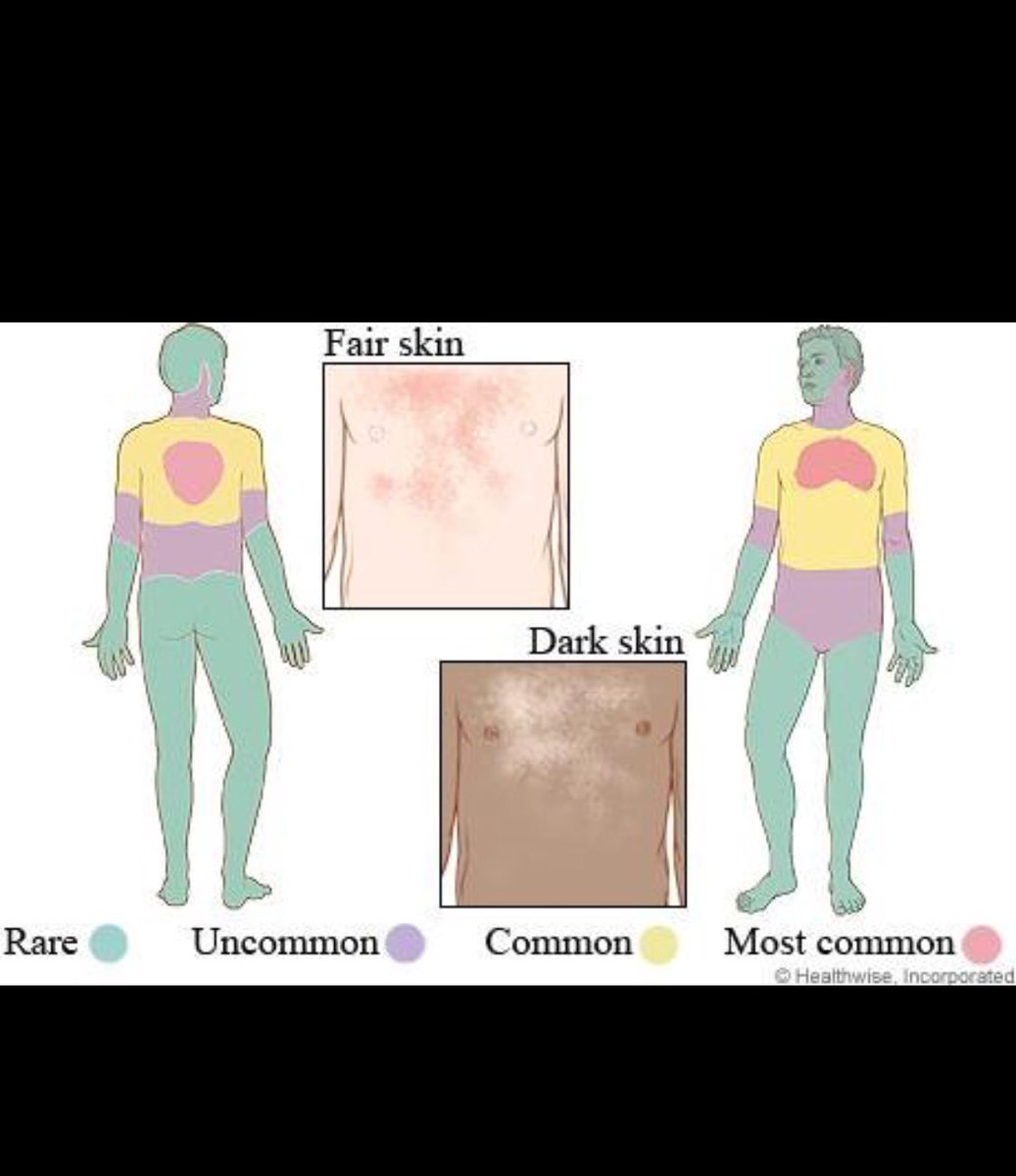 In children and adolescents, spots can be localized on the skin of the extremities, in the armpits and on the scalp. There is no symmetry.
In children and adolescents, spots can be localized on the skin of the extremities, in the armpits and on the scalp. There is no symmetry.
A patient with pityriasis versicolor usually does not report any subjective sensations. In some cases, there is slight itching in the areas of skin lesions. The occurrence of soreness, burning or other unpleasant sensations indicates a secondary infection of the skin with a bacterial flora.
Pityriasis versicolor has a long (several years) course. In the absence of systematic therapy after treatment, recurrence of the disease is possible. Pityriasis versicolor is often cured by exposure to sunlight. Areas previously affected by lichen do not tan and remain white against the background of tanned skin (pseudo leukoderma).
Diagnosis of pityriasis versicolor
Pityriasis versicolor is often immediately diagnosed at a dermatologist’s consultation during examination and dermatoscopy of skin areas with discoloration. To confirm the diagnosis, the Balzer iodine test is performed, which consists in applying 5% alcohol solution of iodine to the skin. Due to the looseness of the affected areas of the epidermis, the skin in these areas absorbs iodine better and stains more intensely than in healthy areas. With the same success, solutions of aniline dyes can be used for the test: brilliant green, iodine, fukartsin. The presence of Besnier’s symptom or the “chip phenomenon” is also determined: peeling of the skin with a slight scraping of it on the surface of pityriasis versicolor spots.
To confirm the diagnosis, the Balzer iodine test is performed, which consists in applying 5% alcohol solution of iodine to the skin. Due to the looseness of the affected areas of the epidermis, the skin in these areas absorbs iodine better and stains more intensely than in healthy areas. With the same success, solutions of aniline dyes can be used for the test: brilliant green, iodine, fukartsin. The presence of Besnier’s symptom or the “chip phenomenon” is also determined: peeling of the skin with a slight scraping of it on the surface of pityriasis versicolor spots.
Luminescent diagnostics, carried out in a special darkened room, reveals red-yellow or dark brown fluorescence spots. Microscopic examination of scrapings with pityriasis versicolor allows you to detect elements of the fungus in the scales of the epidermis.
Differentiate pityriasis versicolor from rosacea based on the clinical picture. Pink lichen is characterized by an oblong and rhomboid shape of lesions, localization of spots along the lines of skin tension. Foci of pseudoleukoderma remaining after pityriasis versicolor is resolved are differentiated from vitiligo, secondary hypopigmentations, and leprosy.
Foci of pseudoleukoderma remaining after pityriasis versicolor is resolved are differentiated from vitiligo, secondary hypopigmentations, and leprosy.
It is also necessary to distinguish pityriasis versicolor from syphilitic roseola, and areas of pseudoleukoderma from syphilitic leukoderma. Syphilitic roseola does not peel off, has a pink color, disappears when pressed. Syphilitic leukoderma in its appearance resembles a lacy mesh, and not confluent spots of reduced pigmentation. To differentiate pityriasis versicolor from syphilitic manifestations, the following tests may be prescribed to the patient: microscopy of scrapings for pale treponema, PCR diagnosis of syphilis, or RPR test.
Treatment of pityriasis versicolor
Treatment is carried out on an outpatient basis until the symptoms of pityriasis versicolor disappear completely. Local antifungal agents are used: 5% salicylic ointment, 3-5% salicylic alcohol, 5-10% sulfuric ointment, 3-5% resorcinol alcohol, terbinafine, bifonazole, clotrimazole, cycloperox, terbinafine, naftifine, etc. Common pityriasis versicolor or its a relapsing course is an indication for general antifungal treatment. It is carried out by ingestion of antifungal drugs such as itraconazole, ketoconazole.
Common pityriasis versicolor or its a relapsing course is an indication for general antifungal treatment. It is carried out by ingestion of antifungal drugs such as itraconazole, ketoconazole.
Prevention
Prevention of recurrence of pityriasis versicolor includes repeated antifungal treatment, regular water treatments and therapy for hyperhidrosis. To prevent infection of the patient’s relatives, the patient’s clothes and linen are disinfected. People who are in constant contact with the patient are examined using a fluorescent lamp.
You can share your medical history, what helped you in the treatment of pityriasis versicolor.
Sources
- This article was prepared based on the site: https://www.krasotaimedicina.ru/
IMPORTANT
Information from this section cannot be used for self-diagnosis and self-treatment. In case of pain or other exacerbation of the disease, only the attending physician should prescribe diagnostic tests.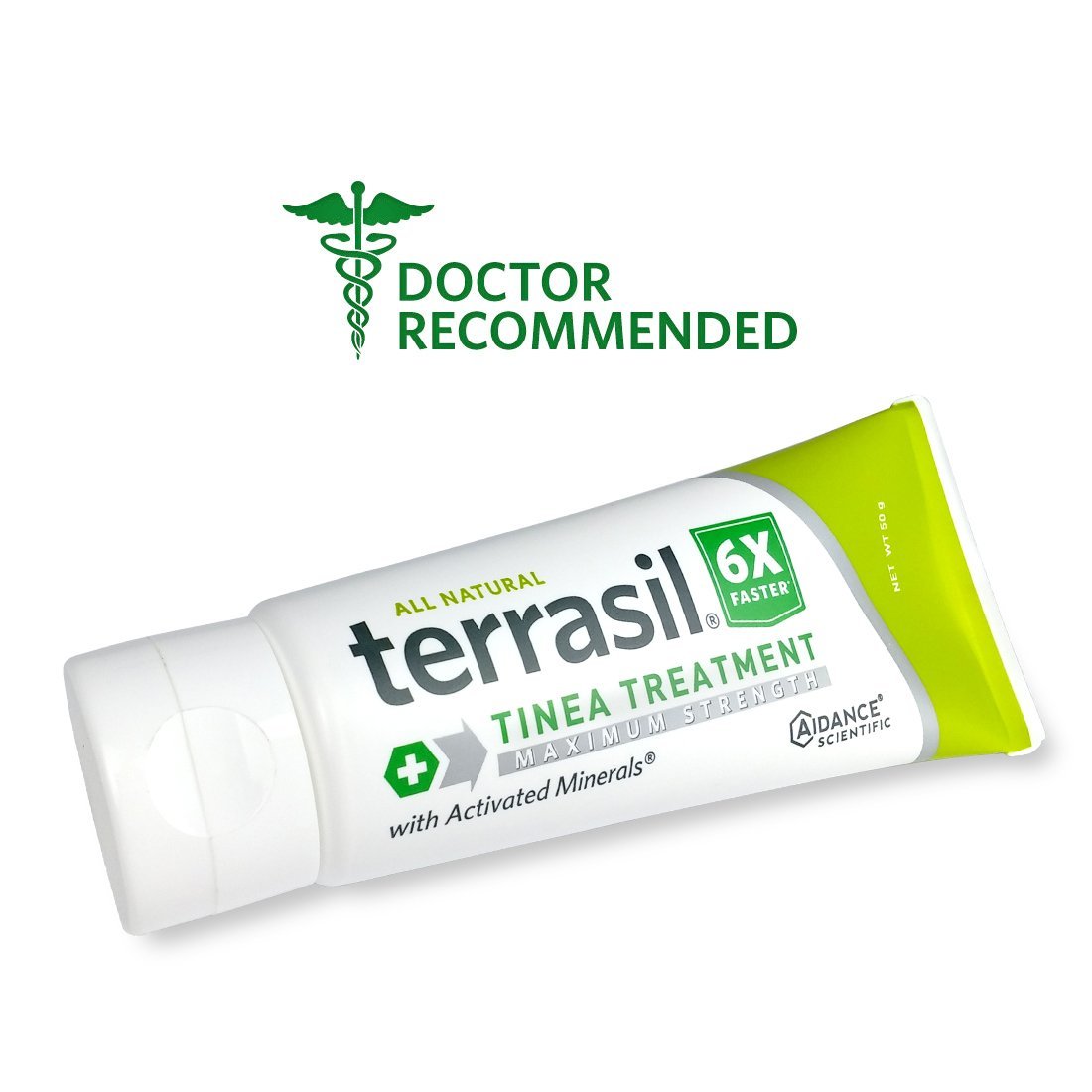 For diagnosis and proper treatment, you should contact your doctor.
For diagnosis and proper treatment, you should contact your doctor.
Pityriasis versicolor: treatment, preparations, ointments
Where can I buy?
Encyclopedia
Fungus
Pityriasis versicolor is a fungal disease of the superficial layers of the skin.
The author of the article
Tamrazova Olga Borisovna
Doctor of Medical Sciences, Professor of the Russian Academy of Sciences, Professor of the Department of Dermatovenereology with a course of cosmetology of the FNMO of the Medical Institute of the FGAEI VO RUDN University of the Ministry of Science and Higher Education of the Russian Federation, Moscow.
Pityriasis versicolor – what is it?
Audio version of the page:
Pityriasis versicolor is not dangerous and not contagious, and also does not carry serious complications. However, members of the same family or people in close contact need to use personal hygiene products (towels). Microorganisms that provoke the appearance of pityriasis versicolor begin to actively multiply and cause disease if a person has predisposing factors. This disease requires treatment and supervision by a doctor in order to prevent the development of a chronic form 1, 2, 3 .
However, members of the same family or people in close contact need to use personal hygiene products (towels). Microorganisms that provoke the appearance of pityriasis versicolor begin to actively multiply and cause disease if a person has predisposing factors. This disease requires treatment and supervision by a doctor in order to prevent the development of a chronic form 1, 2, 3 .
What is pityriasis versicolor and how is it treated? Watch a short video with a candidate of medical sciences, clinical pharmacologist Kukes Ilya Vladimirovich
Symptoms of pityriasis versicolor
Visually, pityriasis versicolor appears on the skin in the form of scarlet asymmetric spots of various sizes. They may merge with each other and have fuzzy, uneven edges 4, 9, 10, 11 .
Their color can vary from white to yellow, light brown, dark brown, grey-black or pinkish red.
Skin defect (spots) occurs in >80% of cases, causing psychological discomfort to the patient.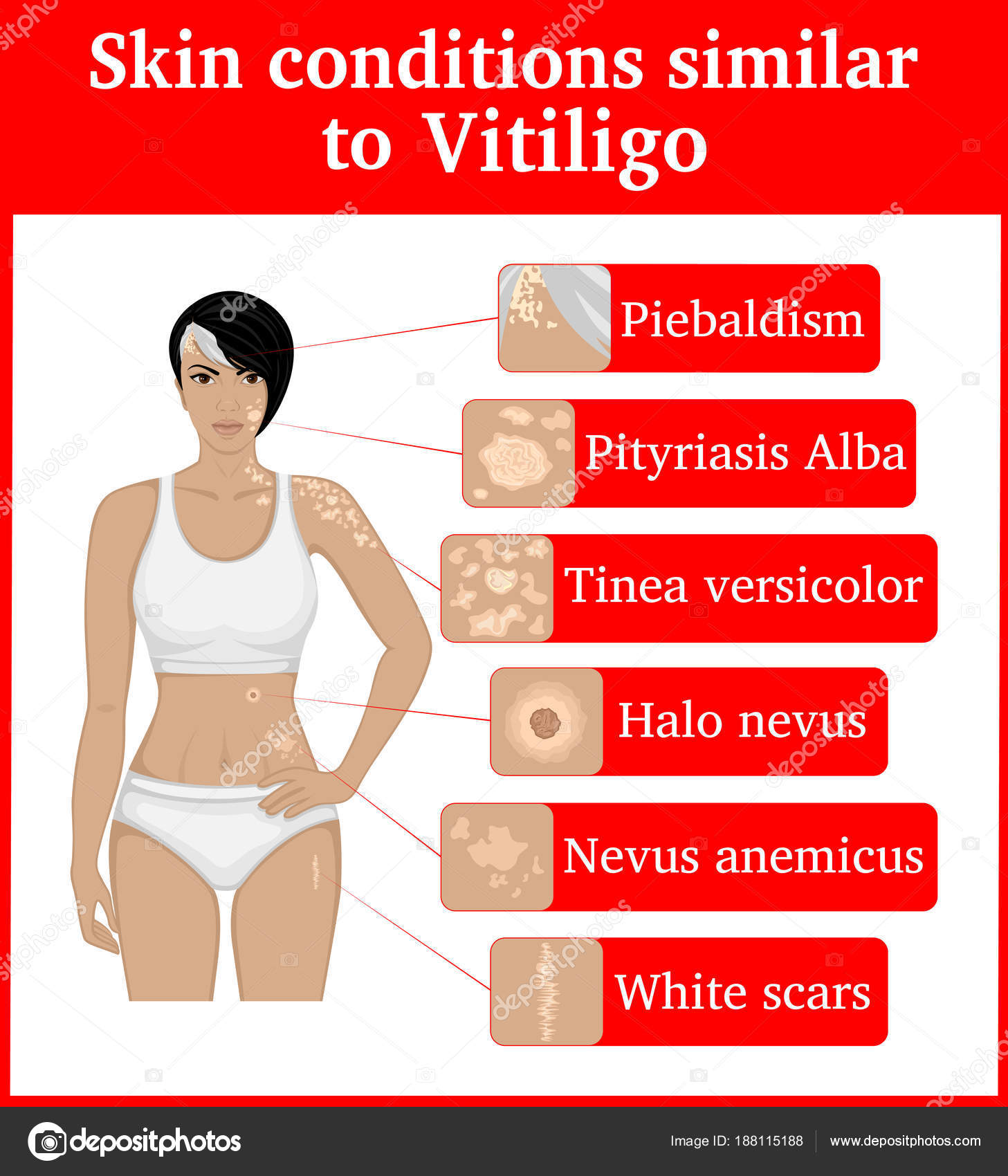
In some cases, another so-called “secondary” infection can join the fungal disease. A symptom of the presence of a secondary infection may be peeling on the surface of the skin and itching.
Chronic pityriasis versicolor
People who are exposed to fungus often do not always see a dermatologist.
This can be a big problem as the disease becomes chronic and more difficult to treat. The risk of relapses (repeated manifestations of the disease) increases.
Localization of pityriasis versicolor
Lichen may be localized on a smooth or hairy area of the skin 4 .
The most common sites affected by are shoulders, back, abdomen, chest, neck. Less commonly affected areas are groin, face, hands, mucous membranes.
Involvement of the scalp
When the scalp is affected, patches of pink first appear, then yellowish pink, later brown or red-brown; on their surface there is a small-lamellar peeling, similar to bran (pityriasis versicolor), easily determined by scraping. Pityriasis peeling is associated with loosening of the surface layer of the skin by a fungus.
Pityriasis peeling is associated with loosening of the surface layer of the skin by a fungus.
Pityriasis versicolor pathogens
Pityriasis versicolor is caused by dimorphic lipophilic yeasts of the genus Malassezia, representatives of the typical skin microflora. The most frequently found are Malassezia globosa, M. sympodialis and M. furfur, less often – M. slooffiae, M. restricta and M. Obtusa 4 . It has been established that about 90% of healthy people are carriers of the saprophytic form of the fungus 4 .
Microscopic examination of a skin scraping is performed to identify the Malassezia species. Particles are scraped off from the affected area of the skin, then the scraping is transferred to the laboratory, where a specific type of fungus is established in the patient.
How to treat lichen caused by fungi? Watch in a two-minute video with Doctor of Medical Sciences, Professor of the Russian Academy of Sciences Olga Borisovna Tamrazova.

Other names for pityriasis versicolor
There are other names for pityriasis versicolor:
- Pityriasis versicolor
- Pityriasis red hairy pityriasis
The presence of the words “red”, “multi-colored”, “bran-shaped” in the name is due to the appearance on the skin of orange-red areas with peeling, similar to bran. Mushrooms of the genus Malassezia live not only on the skin, but also in the sebaceous hair follicles – this explains the word “hairy” in the title.
90% of healthy people carry the fungus that causes pityriasis versicolor 5 .
Under the influence of various environmental factors or individual characteristics of the body, the fungus can transform from a harmless form into a pathogenic one that causes a disease.
Predisposing factors
Unfavorable factors can aggravate the course of pityriasis versicolor and its manifestations on the skin. These include 7, 8 :
These include 7, 8 :
- Overheating of the skin, wearing excessively warm clothes, excessive sweating (especially in people living in countries with hot and humid climates)
- Reduced immunity due to stress, poor diet and lifestyle
- A number of experts note the negative impact of using cosmetics that do not match the patient’s original skin type, as well as the impact of certain cosmetic procedures, such as peels and scrubs
Pityriasis versicolor mainly affects adolescents and young adults between the ages of 10 and 30, but can occur in people of any age group, including infants and the elderly. It is more often registered among the population living in regions with a hot and humid climate. There is no convincing evidence that gender or any particular ethnic group is more susceptible 4 .
Pityriasis versicolor in a child
In children, this disease occurs quite rarely under the influence of the same provocative factors as in adults, including improper skin care and poor hygiene.
Is it possible to get pityriasis versicolor?
It is almost impossible to catch pityriasis versicolor from another person. The disease often develops in people with concomitant pathologies: chronic diseases of the lungs and gastrointestinal tract, endocrine pathology, vegetative-vascular disorders, immunodeficiencies of various nature 4 .
Diagnosis of pityriasis versicolor
Diagnosis of pityriasis versicolor is made on the basis of the clinical picture (symptoms of the disease), as well as patient complaints 12 . For a more accurate diagnosis, a dermatologist conducts a special test called the Balzer Iodine Test, and also checks the Besnier Symptom.
The dermatologist can also use a Wood’s lamp for diagnosis.
Balzer (Balser) test with iodine
Skin areas with small spots with clear boundaries are smeared with 5% alcohol solution of iodine. The horny layer of the skin affected by the fungus quickly absorbs iodine and stains more intensely than other areas.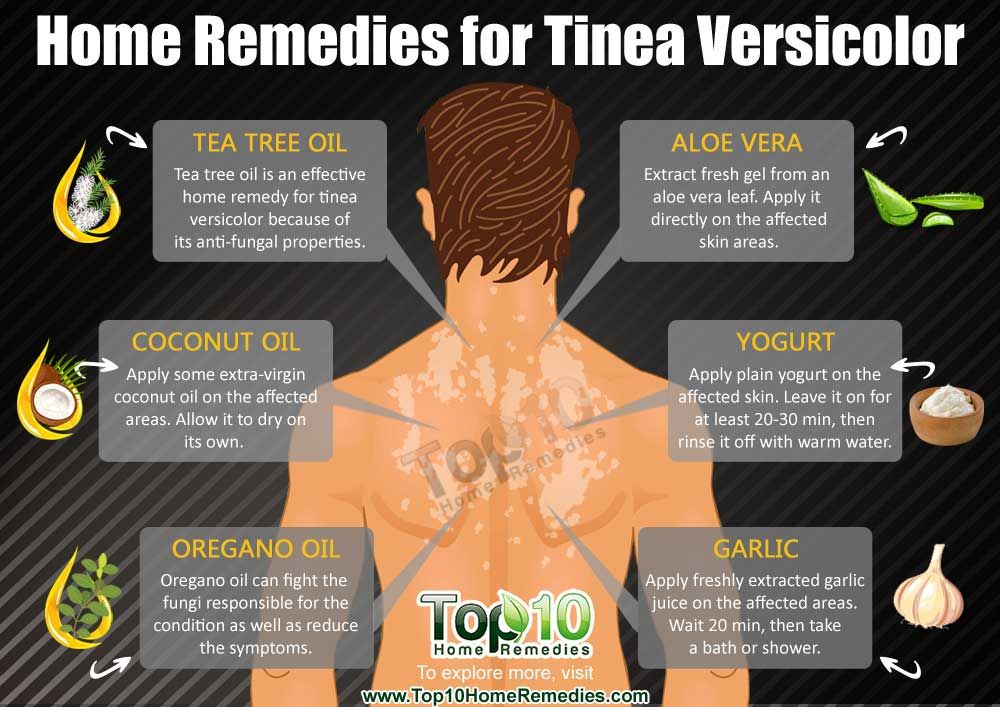 Spots of pityriasis versicolor are clearly distinguished by a dark brown color against the background of only slightly stained areas of healthy skin.
Spots of pityriasis versicolor are clearly distinguished by a dark brown color against the background of only slightly stained areas of healthy skin.
This property is associated with a loosened, disturbed disease of the upper layer of the skin – the epidermis, which is more conductive to staining.
Besnier’s symptom
The doctor selects an exposed area of skin where spots are noted. Further, with the help of available medical instruments, he spends on the spots in the form of scraping. In the presence of pityriasis versicolor, increased peeling of the skin at the site of scraping will be characteristic.
Wood’s lamp
The procedure must be carried out in a dark room. Normal healthy skin does not glow under UV rays, and some bacteria and fungi emit a characteristic natural glow.
How to determine pityriasis versicolor at home?
An iodine test can be performed for self-diagnosis. Affected areas of the skin – spots are lubricated with 3-5% iodine solution. The horny layer of the epidermis, loosened by the fungus, absorbs iodine faster, due to which the lesions are stained much more intensely than healthy skin 6 . As a result, pityriasis versicolor stands out against the background of healthy skin with a dark brown color.
The horny layer of the epidermis, loosened by the fungus, absorbs iodine faster, due to which the lesions are stained much more intensely than healthy skin 6 . As a result, pityriasis versicolor stands out against the background of healthy skin with a dark brown color.
It is important to remember that only a doctor can make an accurate diagnosis!
One of the signs of pityriasis versicolor is uneven sunburn.
The fungus causes a disturbance in the production of melanin, the pigment responsible for tanning. In the presence of the disease, white spots that are immune to the sun may appear on the skin.
Why go to the doctor? Differential diagnosis of pityriasis versicolor
If you experience symptoms of the disease, you should contact a specialist immediately. At the appointment, a dermatologist will conduct an examination, conduct research, establish a diagnosis of the disease and prescribe treatment.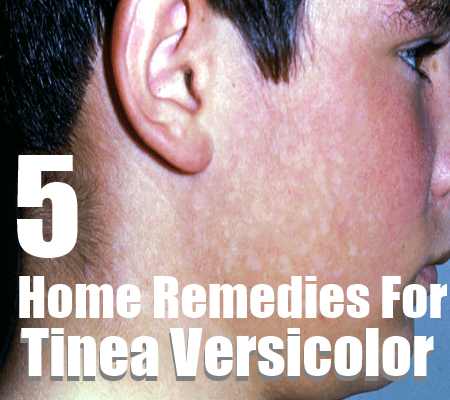
Important! You cannot self-medicate.
There are a number of diseases that may look like pityriasis versicolor 4 .
What can you confuse with pityriasis versicolor?
- Vitiligo and lichen white (vitiligo is characterized by skin patches without pigmentation and without accompanying inflammation)
- Post-inflammatory hyperpigmentation
- Pityriasis rosea
- Psoriasis
- Seborrheic dermatitis
- Progressive macular hypomelanosis
- Confluent and reticular papillomatosis
- Pityriasis rotunda
- Pityriasis pigmentosa white (more common in children and adolescents, and also common in people with dark skin color)
Treatment of pityriasis versicolor
The main goal of therapy for the disease is to achieve stable remission 13, 14 .
Pityriasis versicolor is treated with topical antifungals, such as those based on sertaconazole (Zalain ® ).
In more severe cases, oral antifungals may be given.
Active ingredients for the treatment of pityriasis versicolor
- Sertaconazole
- Bifonazole
- Ketoconazole
- Clotrimazole
- Miconazole
- Terbinafine
- Oxiconazole
Preparations for the treatment of pityriasis versicolor are available in various forms: gel, cream, solution, shampoo, tablets. Only a doctor can prescribe the correct treatment.
Sertaconazole (Zalain® Cream) for the treatment of pityriasis versicolor
Drugs based on sertaconazole (Zalain ® Cream) are often used to treat pityriasis versicolor.
Sertaconazole has a triple antifungal effect 17 , namely:
- Prevents the growth and reproduction of fungi
- Fungal cell death
- Blocking the transition of fungi from a passive form to a pathogenic one (only for fungi of the genus Candida)
More than 60 international studies have been conducted demonstrating the effectiveness of sertaconazole and its high safety profile 15 .
Sertaconazole acts on all types of dermatophyte fungi that cause pityriasis versicolor.
Instruction
Zalain ® Pityriasis versicolor cream
Cream based on sertaconazole (Zalain ® ) has anti-inflammatory 18 and antipruritic 19 action, which is especially important in the treatment of lichen.
Has a triple effect: antifungal, antipruritic, anti-inflammatory
Used 1-2 times a day
Where to buy Zalain ® Cream for the treatment of pityriasis versicolor
or
Find the nearest pharmacy
Recommendations
How does Zalain® work?
Sertaconazole (Zalain ® ) upon contact with a fungal cell destroys its membrane (protective shell) and causes the death of the fungus, and also blocks its growth and reproduction. When applied to the skin, the drug is not absorbed into the general circulation, which increases its safety profile 16 .
When applied to the skin, the drug is not absorbed into the general circulation, which increases its safety profile 16 .
How to use Zalain®?
Sertaconazole Cream (Zalain) is applied to the affected skin in an even, thin layer twice daily, covering approximately 1 cm of healthy skin 16 .
How long is the treatment?
The duration of treatment depends on the type of fungal pathogen and the location of the disease. As a rule, the symptoms of the disease disappear after 2-4 weeks. The recommended duration of treatment is 4 weeks 16 .
Why do you need a doctor?
You should definitely consult a dermatologist. During the therapy, the doctor carefully analyzes the dynamics of treatment, looks at how the regression of skin lesions occurs. In the process of observation, a dermatologist can identify a patient with a chronic form of the disease and additionally prescribe antifungal drugs in the form of tablets, as well as prescribe additional laboratory tests, for example, a biochemical blood test 16 .
Anti-inflammatory effect of sertaconazole
Fungal infections of the skin can cause a local inflammatory reaction that leads to pain, irritation and itching 1 . Sertaconazole has an anti-inflammatory effect, stops the inflammatory reaction and blocks its further development 1 .
Other recommendations
During treatment and for some time after treatment, alcohol should be avoided and lifestyle adjustments should be made as much as possible if it is combined with stress, malnutrition and bad habits. All this affects the functioning of the immune system, the role of which is extremely important in the fight against infection.
Answers to questions about pityriasis versicolor
Pityriasis versicolor – is it serious?
Answer: Pityriasis versicolor is associated with cosmetic skin defects, in connection with which it can cause psychological discomfort to the patient.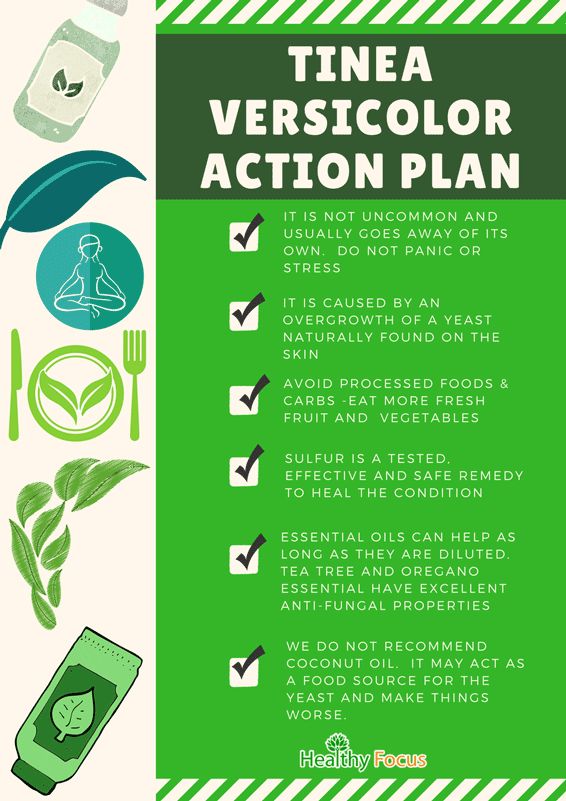 The spots may itch a little. In general, rashes are not dangerous to health and can be treated 4 .
The spots may itch a little. In general, rashes are not dangerous to health and can be treated 4 .
Pityriasis versicolor – is it contagious?
Answer: No – you cannot get pityriasis versicolor from another person. The yeast-like microbe that causes the rash lives on the skin of a healthy person and usually causes no harm. Rashes appear when the fungus passes into the pathogenic form 4 .
How can I prevent the rash from coming back?
Answer: In the presence of predisposing factors, the fungus can recur even after successful treatment. For prevention, your doctor may prescribe antifungal medications and special skin care to prevent recurring rashes.
Is sunbathing effective for pityriasis versicolor?
Answer: No, sunbathing does not affect the course of pityriasis versicolor.
Can you treat pityriasis versicolor on your own?
Answer: In case of skin symptoms, you should consult a doctor who will diagnose the disease and prescribe a course of therapy. Drugs used to treat pityriasis versicolor can cause serious side effects, so self-medication is unacceptable.
Drugs used to treat pityriasis versicolor can cause serious side effects, so self-medication is unacceptable.
Which doctor treats pityriasis versicolor?
Answer: Skin diseases, including pityriasis versicolor, are treated by a dermatologist.
How quickly does the skin recover after treatment for pityriasis versicolor?
Answer: Discoloration of the skin may persist after symptoms disappear. Restoration of normal pigmentation may take several months after completion of 4 treatment.
Is the use of immunomodulators justified in the treatment of pityriasis versicolor?
Answer: You can often hear that various immunomodulators are recommended to improve immunity. From the standpoint of evidence-based medicine, they are drugs with unproven clinical efficacy and do not increase immunity.
Popular articles
More articles
Sources
- Goldstein B.
 G. et al. Tinea versicolor (pityriasis versicolor) // Up To Date Waltham, MA.(Accessed on June 20, 2015). – 2018.
G. et al. Tinea versicolor (pityriasis versicolor) // Up To Date Waltham, MA.(Accessed on June 20, 2015). – 2018. - Hebif T.P. Skin diseases: diagnosis and treatment / T.P. Hebif. – M.: MEDpress-inform, 2007. – 672s
- Galkina E.M., Utz S.R., Bakulev A.L., Minenok T.A. Pityriasis versicolor pilaris Devergy: a clinical case. Saratov Scientific Medical Journal 2016; 12(3): 504–509.
- Federal Clinical Guidelines for the Management of Patients with Pityriasis Multicolor, Russian Society of Dermatovenerologists and Cosmetologists, 2015
- Sergeev A.Yu., Sergeev Yu.V. Fungal infections. Guide for doctors. 2nd ed. M.: Publishing house BINOM, 2008. S. 230–238.
- M.A. Abdulloeva, P.T. Zoirov. Clinical forms of multi-colored lichen of the skin / // Health of Tajikistan. – 2011. – No. 4. – P.12-15.
- Rosales, C.M., Jackson, M.A., Zwick, D., 2004. Malassezia furfur meningitis associated with total parenteral nutrition subdural effusion. Pediatr. dev.
 Pathol. 7, 86–90
Pathol. 7, 86–90 - Cullingham K. Atrophying pityriasis versicolor / K. Cullingham, P.R. Hull // CMA J. – 2014. – 186(10). — P. 776
- Ellabib M.S. Dermatophytes and other fungi associated with skin mycoses in Tripoli, Libya / M.S. Ellabib, Z.M. Khalifa // Ann Saudi Med. – 2016. – No. 21 (3-4). – P. 193-195.
- Abdulloeva M.A., Zoirov P.T. // Modern view on versicolor versicolor: some aspects of pathogenesis and clinical features of the course in hot climates // Bulletin of Avicenna, 19 (1), 31-36
- Honnavar, P., Ghosh, A.K., Paul, S., et al ., 2018. Identification of malassezia species by MALDI-TOF MS after expansion of database. Diagn. microbiol. Infect. Dis. 92, 118–123
- Hu SW, Bigby M. Pityriasis versicolor: a systematic review of interventions. Arch Dermatol. 2010 Oct;146(10):1132-40. doi: 10.1001/archdermatol.2010.259. PMID: 20956647
- Leeming JP, Sansom JE, Burton JL. Susceptibility of Malassezia furfur subgroups to terbinafine.
 Br J Dermatol. 1997 Nov;137(5):764-7. PMID: 9415238
Br J Dermatol. 1997 Nov;137(5):764-7. PMID: 9415238 - Kubanov AA, Galliamova Yu. A. // Differential diagnosis and treatment of Devergy’s disease / Attending physician. – 2014. – No. 3. – P. 87-90
- According to scientific publications in the electronic database of the US National Library. Access: 03.2022, https://pubmed.ncbi.nlm.nih.gov/
- Based on the data specified in the instructions for medical use of Zalain cream reg. No.: P N015678
- Carrillo-Muñoz AJ, Tur-Tur C, Giusiano G, Marcos-Arias C, Eraso E, Jauregizar N, Quindós G. Sertaconazole: an antifungal agent for the topical treatment of superficial candidiasis. Expert Rev Anti Infect Ther. 2013 Apr;11(4):347-58. doi: 10.1586/eri.13.17. PMID: 23566144.
- Sur R., Babad J.M., Garay M., Liebel F.T., Southall M.D. Anti-Inflammatory Activity of Sertaconazole Nitrate Is Mediated via Activation of a p38-COX-2-PGE2 Pathway. J Invest Dermatol. 2008;128(2):336-344. doi:10.1038/sj.jid.5700972.
- Kaur S.


 G. et al. Tinea versicolor (pityriasis versicolor) // Up To Date Waltham, MA.(Accessed on June 20, 2015). – 2018.
G. et al. Tinea versicolor (pityriasis versicolor) // Up To Date Waltham, MA.(Accessed on June 20, 2015). – 2018. Pathol. 7, 86–90
Pathol. 7, 86–90 Br J Dermatol. 1997 Nov;137(5):764-7. PMID: 9415238
Br J Dermatol. 1997 Nov;137(5):764-7. PMID: 9415238